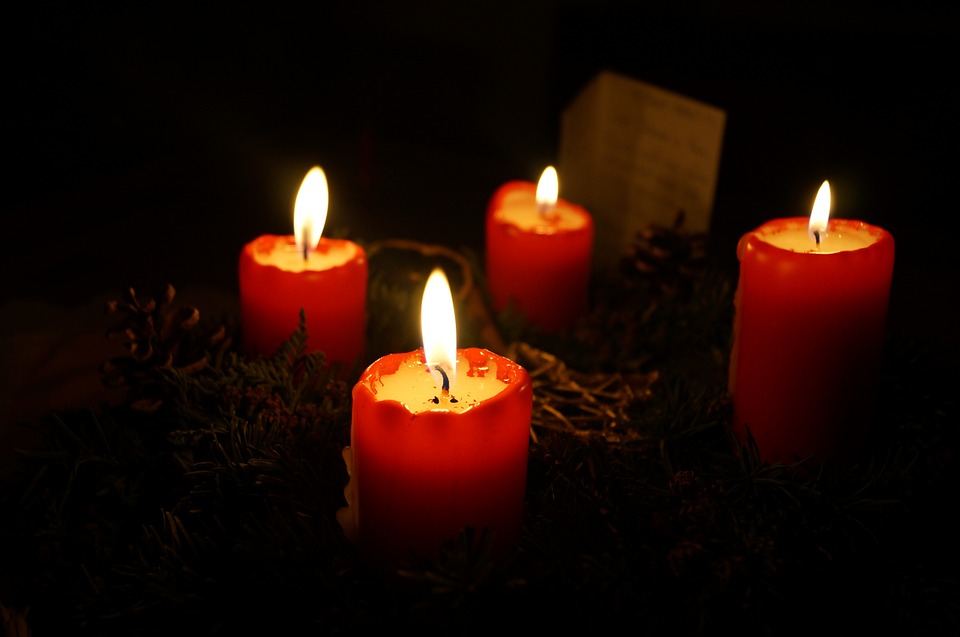December is here, the old year is drawing to a close and – in Scandinavia at least – the days are getting shorter and darker.
In Denmark, this in itself is as good an excuse as any to partake in a bit of hygge: the supposed national pastime with the allegedly untranslatable name. The word hygge has been defined as everything from ‘cosiness’ to ‘the art of living well,’ and the concept has become something of a cultural export in the past couple of years.
Hygge means different things to different people. But there are a few recurring characteristics that most Danes would agree are essential or archetypical components of a genuine hygge session.
Hygge is often a social affair: a time-out from the hectic pace of everyday life, shared with friends or family. More often than not it involves food and drink – particularly of the delectable or indulgent variety. Some would even claim that there can be no hygge without something to nibble on.
Another sure-fire way (pun only somewhat intended) to amp up the hygge factor is to light a few candles. Even Danes who aren’t fans of this particular form of mood lighting will at least be familiar with the notion and probably have a candlelight connoisseur or two among their acquaintances.
With these three essential components in mind, the Advent celebration – observed on the four Sundays leading up to Christmas – is one that lends itself particularly well to some good old-fashioned hygge.
At the heart of it all is the lighting of the four candles on the Advent wreath. It starts on the first Sunday of Advent, with one more candle lit on each subsequent Sunday until just before Christmas, when all four of them shine away and bathe the room in their warm glow.
Wreaths come in many shapes and sizes, the traditional one being woven with evergreens and hung from the ceiling with red ribbons. Today, however, some forego the wreath altogether and stick to tasteful arrangements of square candles and perhaps a sprig of holly or fir.
Adherents of the famed Scandinavian ‘minimalist chic,’ meanwhile, may opt for a simple yet stylish designer candelabrum. No matter the arrangement, the candles remain the essential and immutable component of the Advent celebration.
But there can be no Advent hygge – or indeed any hygge at all – without something delicious to eat. In my family, and in many others, the Danish yuletide treats known as æbleskiver have been a fixture of Advent and other festive get-togethers for generations.
The treat itself, a fluffier, sphere-shaped cousin of the crêpe, has undergone a makeover or two through the years. Few people today prepare them with the apple slices that gave them their name. But they are still cooked in a traditional, designated æbleskiver pan – one of the rare pieces of cookware that only come out of the cupboard for a limited time each year. Æbleskiver are eaten with sugar and preserves. And they are washed down, of course, with a warming cup of gløgg: the Scandinavian version of mulled wine.
Thus we make it through the dark month of December: surrounded by our nearest and dearest, with a bite of something sweet to eat in one hand and a nice warm drink in the other. And all in the warm glow of the Advent candles that illuminate the midwinter darkness, reminding us of the brighter days that await us in the new year.
How to make æbleskiver
- 300g wheat flour
- ½ tsp salt
- 2 tsp sugar
- 1 tsp ground cardamom
- 1 tsp baking soda
- 3 eggs
- 400ml buttermilk
- Butter or oil for frying
Method
1. Mix the dry ingredients together in a large bowl.
2. Separate the yolks and whites of the eggs. Retain both.
3. Stir the egg yolks and buttermilk together in a smaller bowl.
4. Pour the wet ingredients into the larger bowl and stir well.
5. Whip the egg whites in a separate bowl until stiff.
6. Fold the whipped egg whites in the batter carefully.
7. Fry in the æbleskiver pan with a little butter/oil.
8. When the batter starts letting go of the sides of the indentation in the pan, flip the æbleskiver and heat until they’re cooked through.
9. Serve with icing sugar and jam – and gløgg, of course!
Expert tip
Use a knitting needle to flip the æbleskiver. It can be tricky, but you’ll get the hang of it before the batch is done. And don’t worry – even if they’re not perfectly round spheres, they’ll still taste great! If you don’t have an æbleskiver pan, you could try a blini pan. The batter also makes delicious waffles.
Junie’s gløgg
- 1 bottle of red wine
- 100ml port
- 50ml blackcurrant cordial
- 50-100g sugar
- 50g almonds
- 75g raisins
- Zest of 1-2 clementines or 1 orange
- 1 cinnamon stick
- 6 cloves
- 1 star anise
- Small piece of fresh, peeled ginger
Method
1. Place the spices in a tea bag.
2. Pour half of the wine into a large saucepan and add 50ml sugar, along with the almonds, raisins, zest and the bag of spices.
3. Cover and heat until nearly boiling. Remove from stove.
4. Leave to stand for 30 mins, then add the rest of the red wine.
5. Reheat the gløgg until nearly boiling. Add more sugar to taste.
6. Add the port and serve hot.
This article first appeared in the December 2016 edition of STP’s Icebreaker newsletter.



